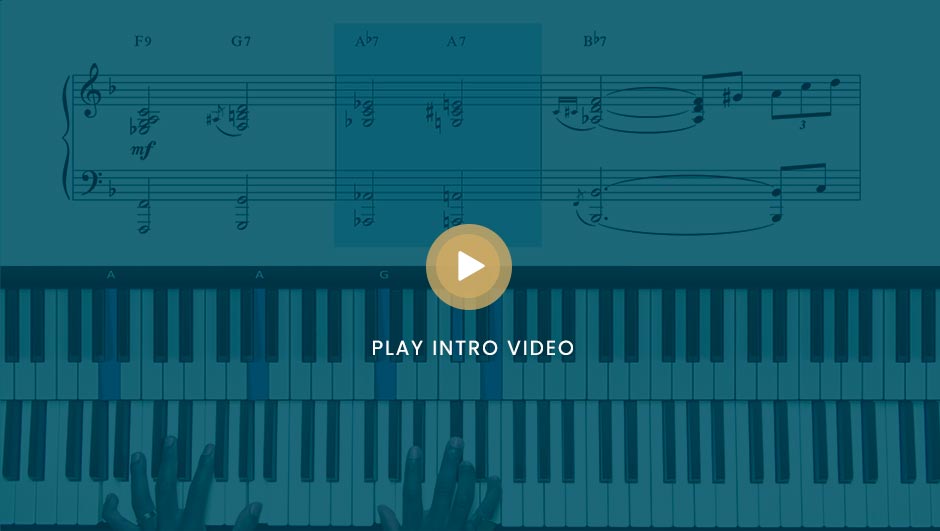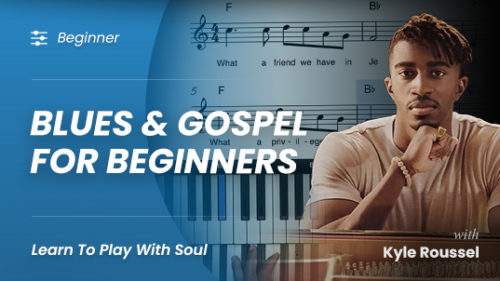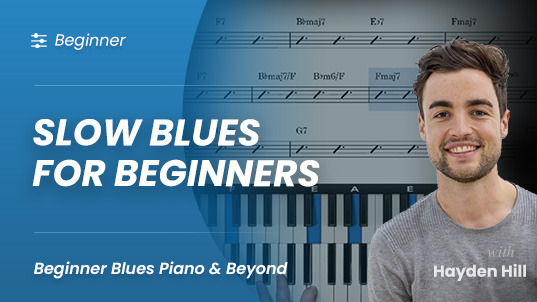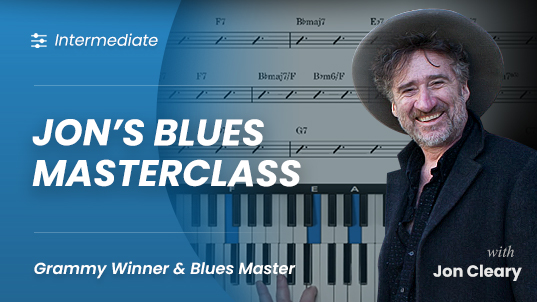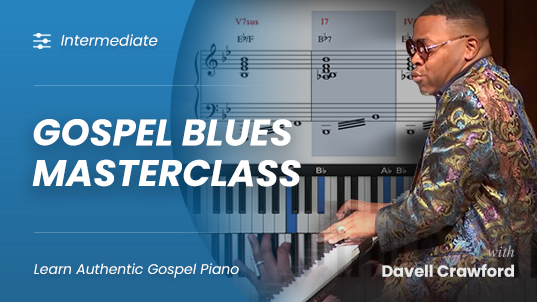Gospel Blues Piano For Beginners
In this course we explore harmony and voicings, guidance for playing hymns, and improvisation techniques for jazz standards, gospel hymns, and church songs.
to this course, right now!
Summary Information:
One-time purchase - learn at your own pace, with unlimited access to this course.
- Difficulty: Beginner
- View Online with Lifetime Access
- Video Slow Down Controls
- A/B Loop
- Theory Lessons
- Performances & Arrangements
- 22 PDF Files & Lesson Supplements
Gospel Blues Piano For Beginners
In this course we explore harmony and voicings, guidance for playing hymns, and improvisation techniques for jazz standards, gospel hymns, and church songs.
In this course we explore harmony and voicings, guidance for playing hymns, and improvisation techniques for jazz standards, gospel hymns, and church songs.
Introductions, Gospel Walk-Ups, & Passing Chords
We start with an exploration of the different ways to create solo piano introductions which can be applied to jazz standards, songs, and church hymns.
We then explore gospel walk-ups and walk-downs and how to add chromatic passing chords to our chord progressions.
For the final lesson in the first module we discuss the differences when playing the the 12 bar blues solo piano, and when accompanying a singer or playing blues with a band.
How To Accompany Hymns On Piano
We first discuss the key principles for playing hymns on piano and adding a blues, jazz, or gospel flavour to the accompaniment. Usually when we are playing hymns, we are playing in the church which usually involves a choir and singers. It's important to understand the different types of gospel hymn styles.
Once we are comfortable with the basic harmony we can add passing chords to our playing. By adding additional 251 progressions into the harmony we create more interesting arrangements and accompaniments for the songs found in blues and gospel music.
Hymns and church songs often contain space in the melody and harmony. We discuss some simple and effective ways to add fills between chords by using the triads built on the 1st and 2nd degree of the corresponding scale. This useful trick can be applied to jazz standards, gospel hymns, and church songs.
Finally we explore some useful devices to add soulful melodic decoration to the tunes we are playing. We discuss grace notes, space fillers, and accents and apply these principles to a well-known church song.
Gospel Blues Soloing & Improvisation
When learning blues improvisation it is important to understand how to develop our solo ideas when improvising in jazz, blues, and gospel settings. We learn how to take a simple melodic ideas and use this in many different ways for soloing and improvisation in blues, jazz, and gospel music.
We then outline useful tricks for 251 soloing and improvisation. We solo over the 12 bar blues by outlining the arpeggios of the 251 passing chords before the core chord changes I, IV, and V.
In this lesson we explore gospel walk-ups and walk-downs and how to add chromatic passing chords to our chord progressions.
In this lesson we explore the differences when playing the 12 bar blues solo piano, and when accompanying a singer or playing with a band.
In this lesson we will explore different ways to create solo piano introductions which can be applied to jazz standards and church hymns.
In this lesson we will discuss the key principled for playing hymns and adding a blues, jazz, or gospel flavour to the accompaniment.
In this lesson we will explore how to add passing chords and additional 251 progressions into church hymns and songs found in gospel music.
In this lesson we will learn how to add fills between chords by using the triads built on the 1st and 2nd degree of the corresponding scale.
In this lesson we will explore some useful devices to add soulful melodic decoration including grace notes, space fillers, and accents.
In this lesson we will learn how to develop your own melodic ideas for soloing and improvisation in blues, jazz, and gospel music.
In this lesson we will explore soloing over the blues with 251 progressions which are implied before the core chord changes.
In this lesson we explore soloing and improvisation over the 12 bar blues using major and minor triad patterns and triad pairs.
-
Chromatic Passing Chords Notation File Type: pdf
-
Gospel Walk-Ups Notation File Type: pdf
-
Introduction Example 1 File Type: pdf
-
Dom7Sus Chord Introduction File Type: pdf
-
Rubato Free-Time Introduction File Type: pdf
-
Playing Hymns With A Solid Pulse File Type: pdf
-
Adding Licks & Fills to Hymns File Type: pdf
-
Passing Chord Examples File Type: pdf
-
What A Friend We Have In Jesus Transcription File Type: pdf
-
Formulas For Triad-Based Fills File Type: pdf
-
“Amazing Grace” – Triad Patterns File Type: pdf
-
“Amazing Grace” – Triad Harmonisation File Type: pdf
-
Transposing Licks Example File Type: pdf
-
Rhythmic Displacement Example 1 File Type: pdf
-
Rhythmic Displacement Example 2 File Type: pdf
-
Using Lick Over Different Chord Types File Type: pdf
-
Passing Chords For Improvisation File Type: pdf
-
Passing Chords Arpeggio Lines File Type: pdf
to this course, right now!
